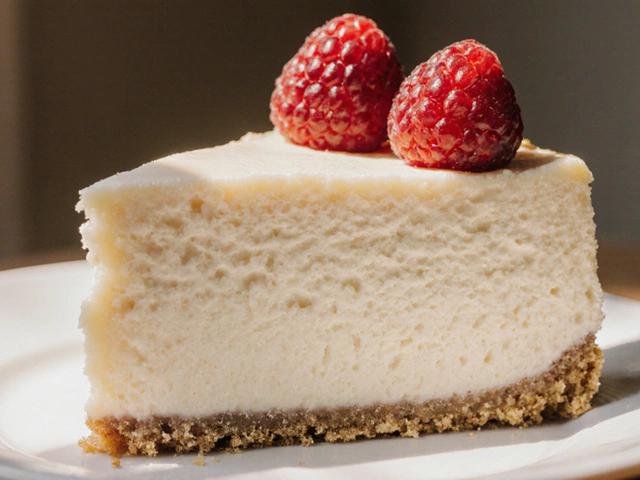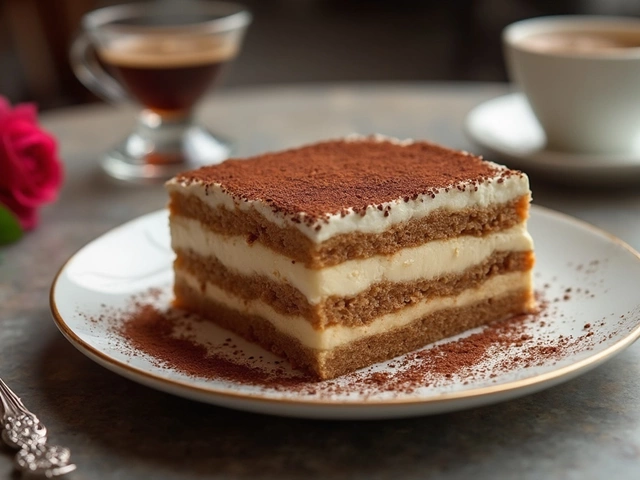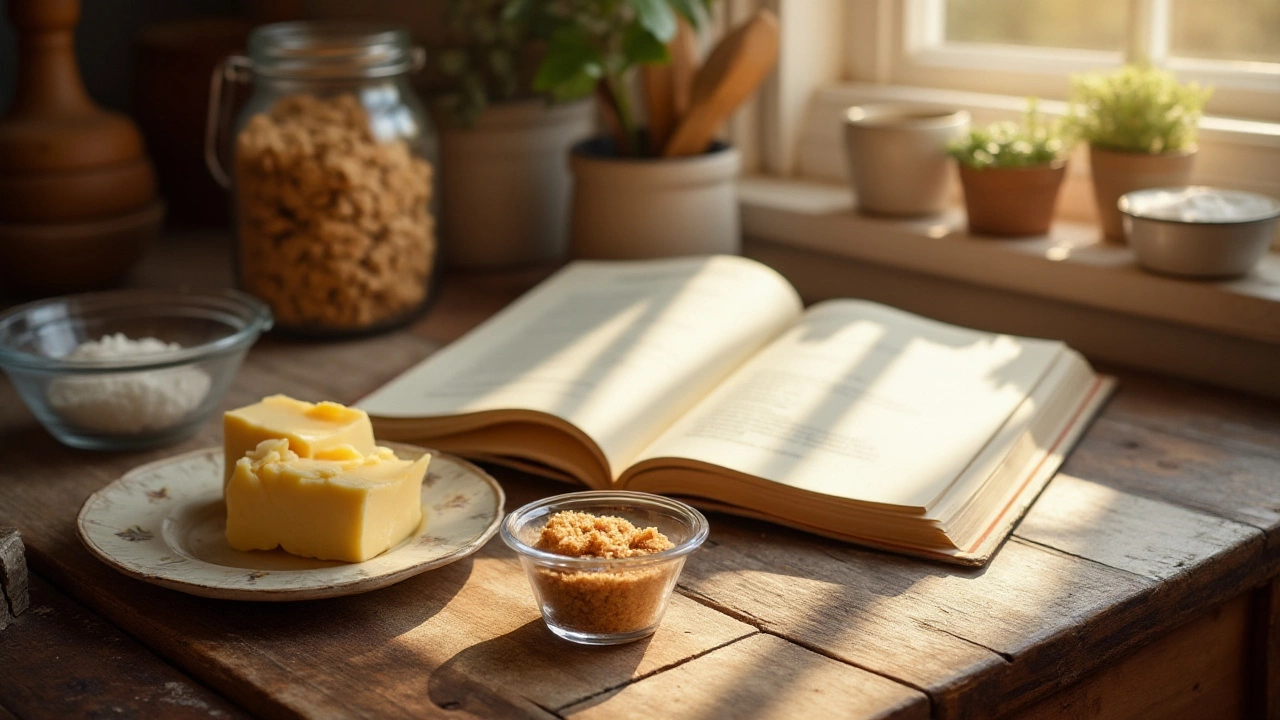
Baking cookies at home is a cherished pastime, conjuring up images of warm kitchens and the comforting scents of butter and vanilla. These morsels of delight, however, aren't magic; they result from the perfect harmony of simple elements. While each ingredient in cookie dough plays a vital role, some hold the spotlight in crafting that impeccable cookie texture and flavor.
Join this exploration as we delve into the indispensable components of cookie making. Discover why flour does more than hold the dough together, how the right sweeteners make for an unforgettable experience, and why fats are key to flavor depth. We'll also touch on how the often-overlooked eggs and a sprinkle of salt can turn an ordinary cookie into a celebrated treat. Let's journey into the heart of cookies, ensuring each batch bakes to perfection.
- The Role of Flour in Cookies
- Sweeteners: Sugar and Beyond
- Butter and Fats: Building Flavor
- Eggs: The Unsung Heroes
- Enhancing with Extras: Vanilla, Salt, and More
The Role of Flour in Cookies
Flour is often referred to as the backbone of cookies, acting as the primary structure builder in your homemade cookies. When sifting through recipes, you might notice that flour amounts can vary greatly depending on the desired cookie texture. But why such a fuss over this seemingly basic ingredient? To start, flour is responsible for creating the network of proteins that give cookies their bite and chew. When water from other ingredients bonds with flour, gluten forms, a process essential for cookies that hold their shape and offer a satisfying texture.
Choosing the right type of flour is crucial. All-purpose flour is the go-to for many due to its balanced protein content, providing a perfect blend of tenderness and structure. However, adventurous bakers might experiment with pastry flour, boasting lower protein levels, to produce a lighter, more crumbly cookie. Interestingly, bread flour, a type with higher protein content, is sometimes the secret ingredient to chewy cookies, especially those with a gooey center. It's a delicate balance; too much gluten and your cookies turn out tough, while too little can result in a flat, spread-out result.
The type of flour isn't the only consideration; how you measure it can make all the difference. A mother’s or grandmother’s advice echoes through generations to "spoon and level" flour to avoid packing it too tightly, ensuring just the right amount to maintain that precise dough consistency. Flour also affects the spread of your cookies. More flour tends to mean less spread, yielding a thicker, rounded cookie. Meanwhile, less flour allows the cookies to dilate more during baking resulting in a crisper edge. Some bakers opt to chill their dough first, an approach reducing spread and heightening chewiness due to better-controlled flour hydration.
Beyond the technical side, cultural influences play a role too.
"In traditional Italian biscotti, the flour brings a distinct crispness that balances perfectly with nuts and chocolate," explains celebrity chef Giada De Laurentiis, emphasizing flour's diverse uses across various cookie styles.As you explore your cookie recipes, experiment with these flour types and techniques, and discover how flour can uniquely shape your baking endeavors. The adventure may begin in familiar territory, but there's always room for delicious exploration.
Sweeteners: Sugar and Beyond
When it comes to baking homemade cookies, sweeteners are often seen as the star players on the ingredient list. They don't just add sweetness; they can significantly alter the texture, color, and flavor profile of your cookies. Sugar in its various forms is pivotal in creating the soft and chewy or crispy and crunchy characteristics that cookie enthusiasts love. Granulated sugar gives cookies a perfect balance of sweetness and helps create a delightfully crispy edge, while brown sugar, with its slight molasses content, not only adds moisture but also imparts a rich, deep flavor and soft, chewy texture.
Granulated sugar crystals also play a crucial role in the creaming process. When mixed with butter, these tiny granules help to aerate the dough, which is essential for leavening, ensuring your cookies rise to the perfect height. On the other hand, brown sugar offers a bit more than just sweetness; it brings a sticky goodness and tends to hold moisture better, which leads to cookies with a dense, chewy consistency. This is especially true for cookies like chocolate chip, where the interplay of textures brings out the best in each bite. Baking tips often recommend blending both sugars to strike a balance that can result in cookies that are both crunchy and chewy.
"The magic of baking lies not in perfection, but in balance,” reflects renowned pastry chef Dominique Ansel, capturing the essence of what a good cookie should be—a harmonious blend of texture and taste.Beyond traditional sugars, liquid sweeteners such as honey and maple syrup offer a whole other dimension to cookie making. These sweeteners can contribute to a deeper color due to their higher liquid content and unique flavors. A tablespoon of honey strategically added to your cookie dough can heighten the overall sweetness and work wonders for the cookie’s moisture level. Meanwhile, maple syrup can contribute a caramel-like complexity, enriching recipes from oatmeal raisin to gingersnaps.
Recently, healthier alternatives and specialty sugars have started making waves in the cookie baking scene. Coconut sugar, for example, introduces a subtle hint of coconut flavor while boasting a lower glycemic index, appealing to more health-conscious bakers. Similarly, agave nectar, often used as a substitute for liquid sweeteners, allows bakers to adapt traditional recipes into dairy-free and vegan-friendly variants without sacrificing moisture. When experimenting with sweeteners beyond the usual suspects, it’s imperative to adjust the recipe accordingly as they can influence both dough texture and bake time significantly.
Let's not forget sweeteners like stevia and erythritol for those cutting down on refined sugar. While these sugar substitutes don't caramelize or tenderize like real sugar, they offer the sweet satisfaction cookie lovers crave without the added calories. Bakers must tread lightly, though, as the lack of caramelization can affect not only flavor but also the color and spread of the finished cookie. Whether using traditional sugar or branching out to less conventional options, understanding how each sweetener interacts with other essential ingredients ensures your homemade cookies turn out delicious and uniquely yours.
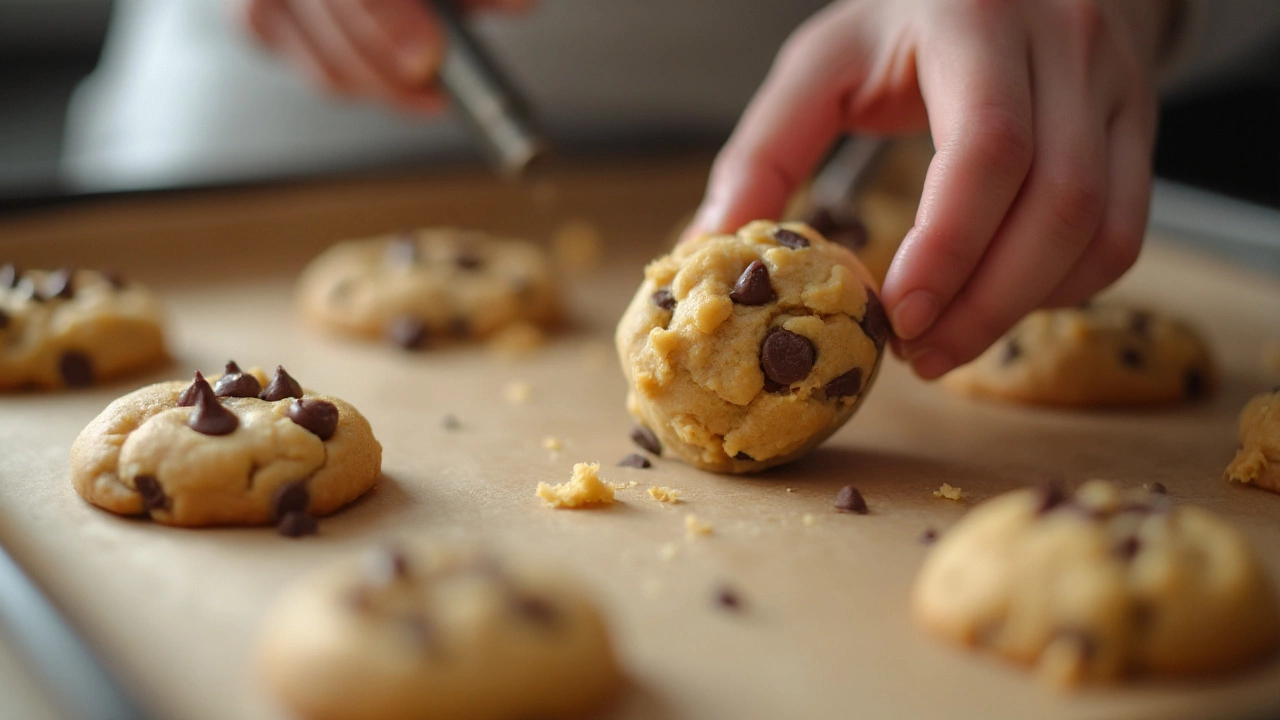
Butter and Fats: Building Flavor
When it comes to the world of homemade cookies, butter and fats stand as their own distinct heroes. These ingredients do more than just merge dough; they provide a foundation of richness that elevates the cookie experience from mere sweet to sensational. Butter, in particular, offers a magical blend of fat and milk solids that melts into a lush creaminess, giving cookies a tender crumb along with a savory edge.
Every time you whip out that golden block of butter, you are engaging with an ingredient that defines much of a cookie's texture. The temperature and even the way butter is incorporated—whether melted, softened, or cold—plays a significant role in the final outcome. For instance, chilled butter tends to yield a puffier cookie, while melted butter might lead to a chewier result. This behavior of fats in the dough contributes to whether your cookies will spread flat or maintain a gentle dome.
As Julia Child eloquently put it, "With enough butter, anything is good." This couldn’t be truer for cookies, where the right amount of fat can transform simple dough into extraordinary bites.
Other fats, like shortening, though not as flavorful as butter, have their place for bakers seeking a certain type of consistency. Shortening does not melt as quickly, which means it can help cookies hold their shape better. It’s often considered in recipes where texture triumphs over taste, offering a longer shelf life and reducing the risk of cookies going stale too quickly. It's a journey of understanding fats where choices like these—choosing between butter and other baking fats—are what make every cookie unique.
Interestingly, exploring theatrical acts of fat substitution with options like coconut oil or margarine opens up a landscape of flavors and textures. With coconut oil, you bring a semblance of tropical sweetness; however, it can alter the taste profile and health attributes of the cookies. Although butter remains the unrivaled champion in cookie-making for its flavor, venturing with different fats lets bakers learn the dance of taste and texture. This complex play ensures that while staying true to the tradition, there’s ample room for experimentation in crafting delightful cookie recipes.
Eggs: The Unsung Heroes
In the world of homemade cookies, eggs rarely take center stage, yet they are unquestionably pivotal in crafting the perfect batch. Often considered merely a binding agent, these culinary chameleons bring a lot more to the table. Eggs contribute to the structure, leavening, color, and flavor of cookies, creating a delicate balance that's crucial for any cookie recipe's success. The white and yolk each play unique roles, harmonizing to create cookies that are not just held together but elevated in texture and taste.
The structure eggs provide is indispensable. When you beat an egg, you unwind its proteins, which later form crucial networks when heated, trapping air and moisture, thereby adding volume and tenderness to your cookies. The yolk, rich in fats and lecithin, acts as an emulsifier, giving cookies their silky smooth texture. It’s this combination that prevents moments of over-crumbling disasters, particularly in baking which relies on precision. Apart from structure, eggs impact browning through the Maillard reaction, contributing to the beautiful golden hue that meets the eye as you open the oven door.
Eggs are also responsible for moisture. This is particularly vital when achieving chewy cookies. The water content in eggs softens flour proteins, which help maintain moisture within the cookie—resulting in that coveted chewy center and delightful bite. Interestingly, altering the number of eggs or egg yolks can drastically change the cookie's final outcome. For example, extra yolks yield a richer taste while reducing whites can make cookies more dense.
Moreover, the inclusion of eggs contributes to the cookie’s flavor profile. While subtle in comparison to other ingredients like sugar or vanilla, the natural umami lurking in eggs amplifies the overall taste. They enhance other flavors without overpowering, striking a balance that makes each bite satisfying.
Acknowledging their multiple roles, understanding these egg-cellent aspects can allow bakers to tweak recipes effectively to achieve desired modifications. Next time you're whipping up a batch of cookies, take a moment to appreciate the versatility and significance of eggs—true unsung heroes in every sense. As world-renowned chef Julia Child once said,
"The egg can turn any dish into a masterpiece."
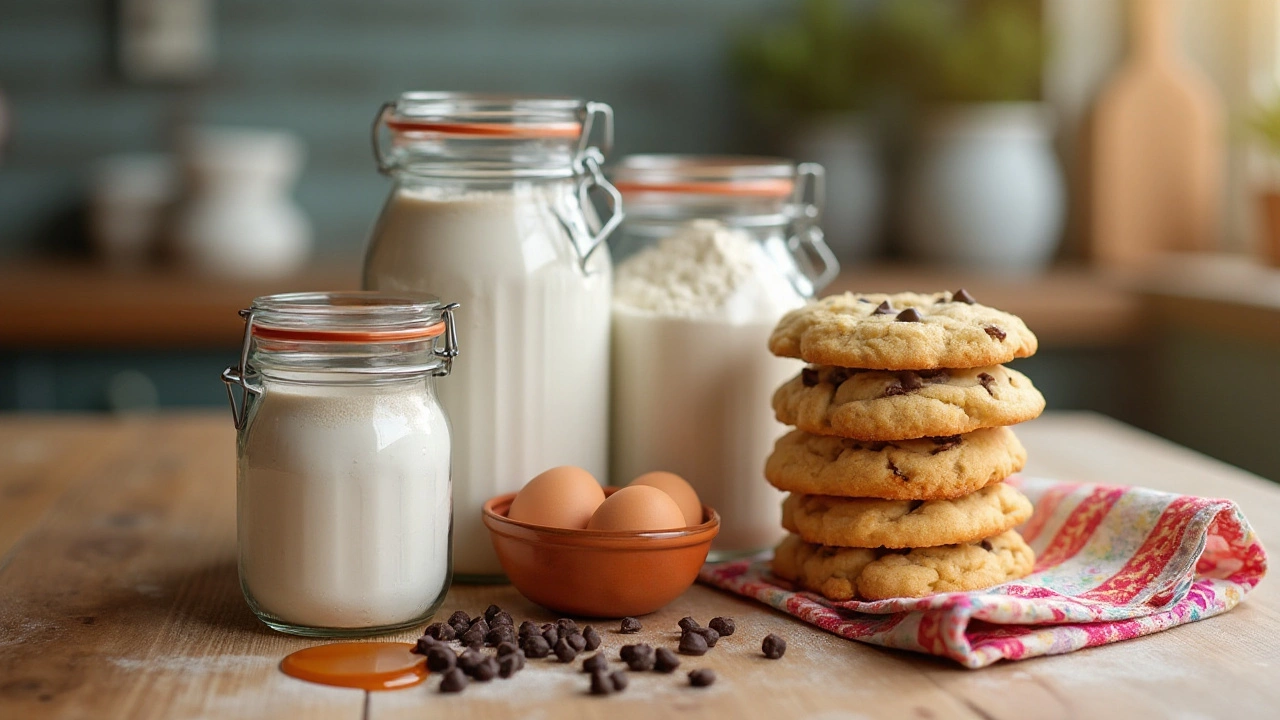
Enhancing with Extras: Vanilla, Salt, and More
Let’s dive deeper into the world of homemade cookies by exploring the subtle, yet powerful role of those tiny extra ingredients that make all the difference. While flour, sugar, and butter build the foundation of your cookie, it’s the extras, like vanilla and salt, that can transform the cookie from average to dynamite delicious. Vanilla, a fragrant spice, is derived from the vanilla bean pod and often comes in extract form. Its primary role in cookie dough is to enhance the flavors of other ingredients. Although many recipes prescribe a mere teaspoon, don’t underestimate its contribution. The interplay between vanilla and sugar creates a complexity in sweetness that is noticeable, even if subtly. As vanilla gently permeates the dough, it evokes warmth and amplifies the richness of the cookie recipes.
Add to that a dash of salt, and you unlock a magic of its own. Salt is more than a taste enhancer; it's a balancer. By counteracting the sweet elements, it highlights distinct flavors within the cookie, bringing depth and contrast. A pinch of sea salt, for instance, can accentuate the caramel notes in browned butter cookies, while Himalayan salt might offer unique mineral nuances, elevating even the simplest cookie.
Further enhancing your cookies can involve experimenting with aroma-rich spices such as cinnamon, nutmeg, or even anise. These spices not only contribute to flavor diversity but also cater to seasonal preferences with a touch of warmth and nostalgia. There's a certain joy in customizing your batch with a personal twist—perhaps a grating of zest from the citrus of your choice, adding a zesty splash to counter the sweet. Consider incorporating nuts like pecans or almonds for added texture and a hint of earthy flavor. A drop of almond or peppermint extract can add an aromatic layer that leaves a lasting impression.
Mark Bittman, a renowned food journalist, once noted, "The simplest recipe requires noticing ingredients. The heart of a good cookie carries these extras lovingly."
Not just limited to edibles, the form and shape of your cookies can become a canvas for creativity as well. Whether you’re showcasing a traditional chocolate chip cookie or a seasonal gingerbread cutout, decorating with candies, drizzled chocolates, or even a dusting of powdered sugar can set the stage for a treat that's as visually pleasing as it is scrumptious. Therefore, your choice of extras and their combination can greatly influence how you channel your signature batch of cookies, lending a personalized touch that speaks from your soul to those who indulge in your creations.
This careful dance of enhancing flavors with vanilla, salt, and more is what sparks joy in both the creator and the taster. By mindfully integrating these details, your oven-baked creations go beyond tastes—they become memories marked by unique scents and flavors that are sure to steal smiles and hearts alike.

